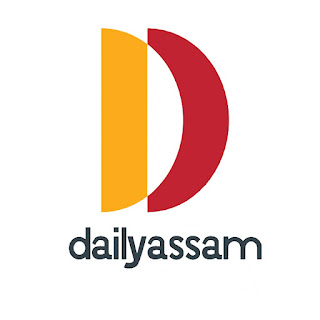Chapter 23
Constitution of India
1) Write the short answer-
a) How long did it take to draft the Constitution of India?
Answer: The Constitution of India took 2 years, 11 months , 18 days to draft.
b) In which year was the Constitution of India fully implemented?
Answer: The Constitution of India came into force on 26 January
c) When did the election process for India Members start?
Answer: The Bharat Parishad Act, 1892, as amended, initiated the election of members of India.
d) What provision was introduced in the Government of India Act, 1935?
Answer: The Government of India Act, 1935 introduced autonomy and federalism.
e) When was the Draft Committee of the Constituent Assembly constituted?
Answer: The Draft Committee of the Constituent Assembly was formed on 29 August
2) Fill in the blanks.
a) In the Indian Constitution 395 hrs paragraph,22 o'clock chapter, 12 o'clock There is a schedule.
b) The Constitution powers Central, State, mutual divided into lists.
c) Constitution In the Preamble to the Constitution through the 42nd Amendment socialist The word is connected.
d) He is a member of the Constitution Drafting Committee Syed Mohammad Chadullah.
3) Give the answer.
a) Why is the Constitution of India called the longest Constitution?
Answer: The Constitution of India has 395 Articles, 22 Chapters , 12 Schedules. The Constitution is long to collect selected ideals from several constitutions of the world and incorporate them into our Constitution.
b) What is meant by a composite constitution?
Answer: Some articles of the Constitution of India can be easily amended while others require special laws to be amended. In other words, it is a combination of flexible and inflexible. Therefore, the Constitution of India is called a composite Constitution.
c) What are the main objectives of the Directive Policy of State Management?
Answer: The main objectives of the prescriptive policy of state management are:
→To improve the standard of living of all sections of the people of the country,
→Economic equality,
→Development of rural areas,
→Introduction of Panchayat system,
→Settle disputes peacefully and establish friendships,
→Provide free compulsory education to children aged 6-14 years to eradicate illiteracy,
→Reservation for backward classes of society,
→To preserve the heritage sites and monuments of the State,
→Conservation of the natural environment.
d) Our Constitution is modeled on the Constitution of which country?
Answer: Our Constitution, modeled on the Constitution of Ireland, includes prescriptive principles.
4. Express in one word.
a) The head of state is not hereditary -
b) A State free from foreign rule –
c) A state with no national religion-
d) A state that seeks the welfare of the people -
Answer:
a) A state whose head is not hereditary - a republic
b) A state that is free from foreign rule – a sovereign state.
c) A state with no national religion is secular.
d) A state that seeks the welfare of the people -a welfare state.
5) Match the right part with the left part-
Answer:
6. Briefly write about the historical background of the Constitution of India.
Answer: The Constitution of India was completed after a long process.
After the Sepoy Mutiny of 1857, the British Government passed an Act that transferred the rule of India from the East India Company to the direct rule of the Queen of England. From then on, the British ruled India by passing various laws from time to time.
In 1861, the British Government passed the 'Bharat Parishad Act' The Act decentralized Indian administration and introduced representative governance in India.
The electoral process was introduced in India with the passage of the amended 'Bharat Parishad Act' of This law also did not satisfy the Indian people.
The Government of India Act was passed in 1909 but the Indians were not satisfied with it either. This Act is called the Morley Minto Reform Act.
The Government of India Act of 1919 introduced a form of autonomy in India but its scope was very limited.
The Government of India Act, 1935 introduced autonomy and federalism for the first time.
The report of the Car Simon Commission headed by Sir John Simon in 1927 emphasized the drafting of a separate Constitution for India.
In 1934, the Indian National Congress took influence to form a Constituent Assembly. During the period when the British Government accepted Simon's report, three round tables were held in London to exchange views with representatives of India. The Government of India Act, 1935 was passed on the basis of the influence of this table. This Act is considered to be very important in the constitutional history of India.
At the outbreak of World War II (1939-1945), the demand for independence became very active among Indians. The British Government accepted the demand for a separate constitution through the August Resolution in 1940 in order to gain the support of the Indians in their preparations for war.
Accordingly, in 1946, a Cabinet Mission came to India and proposed to draft a separate Constitution for India. The Constituent Assembly of India was formed on the basis of this proposal. Dr. Rajendra Prasad was elected as the President of this meeting.
With the independence of India, the Constituent Assembly was given the right to draft a Constitution for India.
On 29 August 1947, a draft committee of six members was formed with Dr. Ambedkar as its Chairman. The draft constitution was published in January 1948 and took eight months to consult the people. On 26 November 1949, the President of the Constituent Assembly signed the draft Constitution. It was then passed by the Constituent Assembly. It took 2 years, 11 months and 18 days to draft and complete the Constitution. The Constitution came into full force on 26 January
7. Write down the role of Assam in the drafting of the Constitution.
Answer: The prominent figures of Assam who played a major role in the drafting of the Constitution are Syed Mohammad Chadullah, Gopinath Bardoloi, Dharanidhar Basumatary, Nibaran Chandra Laskar, Kuldhar Chaliha, Rohini Kumar Chowdhury and Abdur Rauf. Among them, Syed Mohammad Chadullah was a member of the Constituent Assembly Drafting Committee. He was the Chairman of the Minority Advisory Committee formed to protect the interests of the Scheduled Castes and Hill Tribes of Assam. The Sixth Schedule was incorporated into the Constitution on the recommendation of this Committee. This Schedule provides for autonomy for the hilly and tribal areas of North East India. These distinguished personalities played a strong and constructive role in the drafting of the Constitution of India. The Constitution provided for the protection of the interests of the people of the entire country as well as their own states.
8. Describe the basic ideals contained in the Preamble of the Constitution of India.
Answer: The great ideals enshrined in the Preamble of the Constitution of India are freedom, equality, justice and brotherhood.
a) freedom- Indian citizens can freely express their thoughts and opinions on any subject, convert, preach and worship.
b) Parity- All citizens residing in India are equal before the law. Citizens can enjoy all the rights or privileges provided by the Constitution without discrimination on the basis of race, caste, religion and gender.
c) fair- social, economic and political justice to citizens. Social justice means that all citizens of India can enjoy equal rights and lead a dignified life. Economic justice refers to the removal of economic inequality from society. The right to seek employment at will, the right to work, the right to decent wages, the right to rest, and so on indicate economic justice. Political justice refers to the right of adult citizens to participate directly and indirectly in the affairs of the state or government. Freedom to vote, freedom to contest, freedom to apply for government jobs, etc.
e) Brotherhood- This concept implies harmony, harmony, sympathy and unity among people of all races, religions and cultures living in India.
9. Write short notes:
a) Dr. Bhimrao Ambedkar:
Answer: Dr. Bhimrao Ambedkar's full name is Baba Saheb Bhimrao Ambedkar. Ambedkar established social equality by incorporating fundamental rights in the Constitution to eliminate untouchability in Indian society. Emphasis was placed on education and property rights for women. He took decisive steps to make the Constitution of India work.
b) Dr. Rajendra Prasad:
Answer: Dr. Rajendra Prasad was the first President of independent India. He was involved in the drafting of the Constitution of India from the beginning. He was also the President of the Constituent Assembly formed to draft the Constitution. The Constitution of India came into force on 26 January 1950 under his presidency of the Constituent Assembly.
C. Parliamentary Government
Answer: In such a system of government, the President of the country is the nominal head. The country is governed in his name. In the Indian parliamentary system of government, executive power is vested in the President. However, all the powers of the state are exercised by the Prime Minister and the Council of Ministers headed by him. The Cabinet is accountable to the Lok Sabha.





